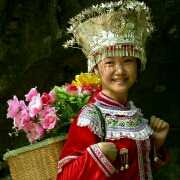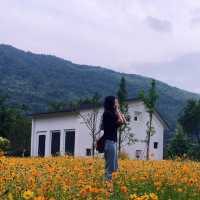Very simple, very religious, not as many people as the Jokhang Temple, but also a witness to history, one of the must-go places.
;
Xiaozhaosi Road Review
4.5 /537 Reviews
Popular Destinations
Zaandam Travel | Zhengzhou Travel | Moscow Travel | Koh Tao Travel | Goulburn Travel | Redang Island Travel | Warragul Travel | Phuket Travel | Phi Phi Islands Travel | Koh Samui Travel | Manila Travel | Hoi An Travel | Petermann Travel | Nha Trang Travel | Minsk Travel | Birmingham Travel | Longhai Travel | Brunei-Muara Travel | Luang Prabang Travel | Eisenstadt Travel | Brougham Travel | Huaraz Travel | San Giovanni Rotondo Travel | Russellville Travel | Tucepi Travel | State College Travel | South Point Travel | Highlands County Travel | Cleveland County Travel
Recommended Attractions at Popular Destinations
Bangkok attraction near me | Tokyo attraction near me | Manila attraction near me | Hong Kong attraction near me | Taipei attraction near me | Seoul attraction near me | Los Angeles attraction near me | New York attraction near me | Shanghai attraction near me | Kuala Lumpur attraction near me | Shenzhen attraction near me | Osaka attraction near me | Singapore attraction near me | Guangzhou attraction near me | London attraction near me | San Francisco attraction near me | Beijing attraction near me | Macau attraction near me | Bali attraction near me | Paris attraction near me | Ho Chi Minh City attraction near me | Orlando attraction near me | Jakarta attraction near me | Phuket attraction near me | Chicago attraction near me | Toronto attraction near me | Istanbul attraction near me | Cebu attraction near me | Dallas attraction near me | Seattle attraction near me
Popular Attractions
Universal Beijing Resort | Jade Dragon Snow Mountain | Sovereign Hill | Moreton Island | Darling Harbour | Hamilton Island | Yuanmingyuan Park | Asakusa | Bridestowe Lavender Estate | Sydney Harbor | Luna Park Sydney | Sydney Fish Market | Ubud | Arthurs Seat Eagle - Base Station | Pulau Payar | Perdana Botanical Garden | Huimin Street | Gulshan E Madina Masjid | Burr Oak Winery | Temple of Shree Shani Dev | Skælskør Biografforening Kosmorama | EL TROMPO | Quresh Masjid مسجد القریش | Kali Mata Temple | Parc des Ardennes | Jabłoniowy Sad | Church of Our Lady of the Assumption | Universal Studios Singapore | Sydney Zoo | Phillip Island
Popular Travelogues
Bangkok Travelogue | Tokyo Travelogue | Hong Kong Travelogue | Seoul Travelogue | Los Angeles Travelogue | New York Travelogue | Shanghai Travelogue | Kuala Lumpur Travelogue | Shenzhen Travelogue | Osaka Travelogue | Singapore Travelogue | London Travelogue | Beijing Travelogue | Macau Travelogue | Bali Travelogue | Paris Travelogue | Phuket Travelogue | Toronto Travelogue
Payment Methods
Our Partners
Copyright © 2024 Trip.com Travel Singapore Pte. Ltd. All rights reserved
Site Operator: Trip.com Travel Singapore Pte. Ltd.
Site Operator: Trip.com Travel Singapore Pte. Ltd.












